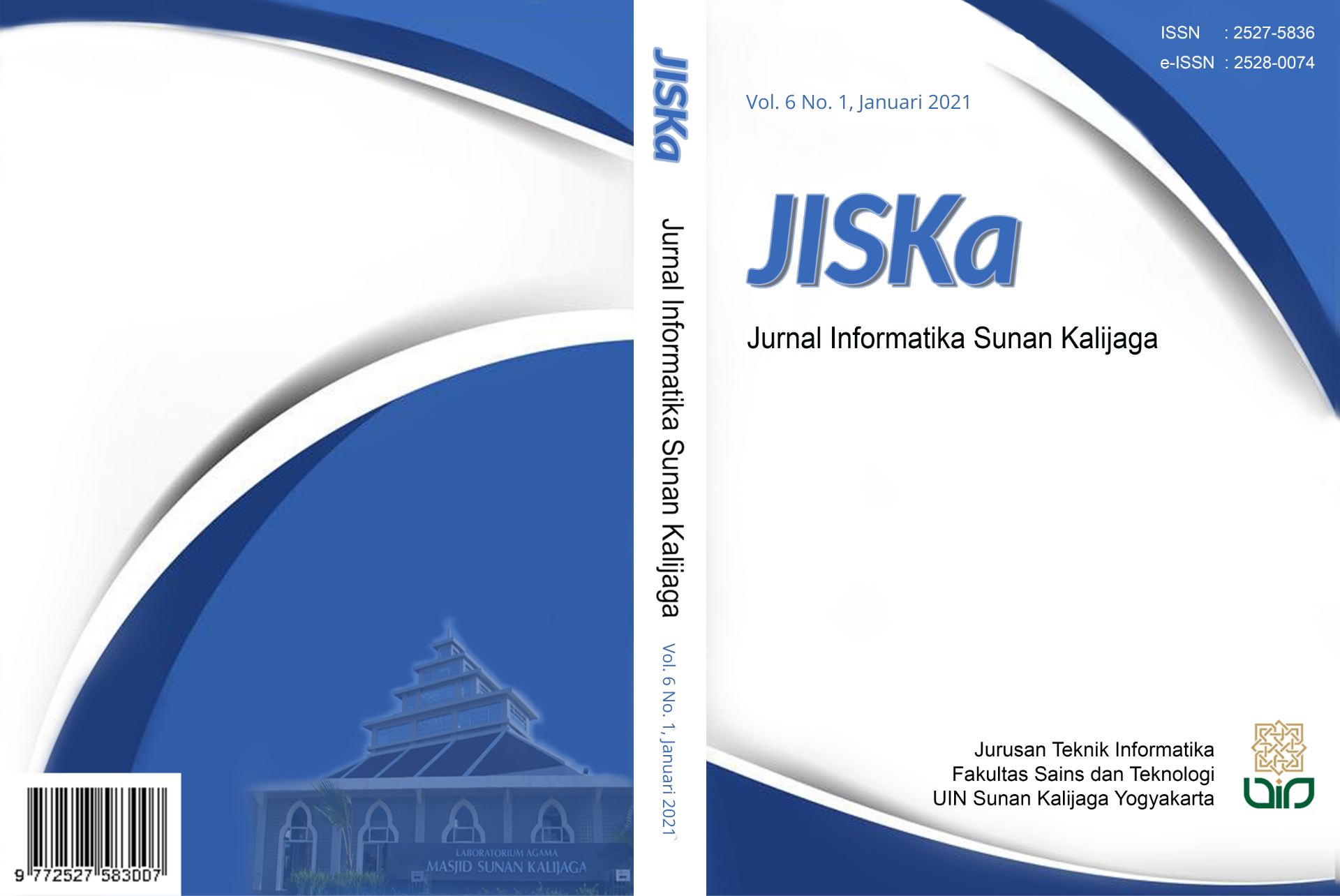Forensik Mobile pada Layanan Media Sosial LinkedIn
DOI:
https://doi.org/10.14421/jiska.2021.61-02Abstract
The research explores mobile forensic on LinkedIn social media. Forensic mobile finds digital evidence of job hoax cases in LinkedIn, investigation using the NIST (National Institute of Standard and Technology) method. Data collection techniques using Andriller tools in investigations. Data examination using tools Root Browser, Autopsy in the forensic process. data analysis using tools MOBILedit in the forensic process. The investigation found digital evidence of log activity, a status update on LinkedIn. Other results found in the investigation are 17 WiFi password, 117 download history, 263 phone calls, 1 file deleted, 1 file hidden, and 1 file raised, the research has reached the expected target.
References
Budiman, R. (2001). Computer Forensic : Apa dan Bagaimana? In Fakultas Teknik Elektro dan Informatika.
Kävrestad, J. (2018). Fundamentals of digital forensics: Theory, methods, and real-life applications. Springer Nature Switzerland. https://doi.org/10.1007/978-3-319-96319-8
Kunang, Y. N., & Khristian, A. (2016). Implementasi Prosedur Forensik untuk Analisis Artefak Whatsapp pada Ponsel Android. Prosiding ANNUAL RESEARCH SEMINAR, 2(1), 64–73.
LinkedIn. (2020). What is LinkedIn and How Can I Use It? LinkedIn. https://www.linkedin.com/help/linkedin/answer/111663/what-is-linkedin-and-how-can-i-use-it-?lang=en
Madiyanto, S., Mubarok, H., & Widiyasono, N. (2017). Proses Investigasi Mobile Forensics Pada Smartphone Berbasis IOS. Jurnal Rekayasa Sistem & Industri (JRSI), 4(1), 93–98. https://doi.org/10.25124/jrsi.v4i01.149
Nasirudin, N., Sunardi, S., & Riadi, I. (2020). Analisis Forensik Smartphone Android Menggunakan Metode NIST dan Tool MOBILedit Forensic Express. Jurnal Informatika Universitas Pamulang, 5(1), 89–94. https://doi.org/10.32493/informatika.v5i1.4578
Novrianda, R., Kunang, Y. N., & Shaksono, P. H. (2014). Analisis Forensik Malware Pada Platform Android. Konferensi Nasional Ilmu Komputer (KONIK), 377–385.
Raharjo, B. (2013). SEKILAS MENGENAI FORENSIK DIGITAL. Jurnal Sosioteknologi, 12(29), 384–387. https://doi.org/10.5614/sostek.itbj.2013.12.29.3
Riadi, I., Umar, R., & Firdonsyah, A. (2017). Identification Of Digital Evidence On Android’s Blackberry Messenger Using NIST Mobile Forensic Method. International Journal of Computer Science and Information Security, 15(5), 155–160.
Riadi, I., Umar, R., & Nasrulloh, I. M. (2018). ANALISIS FORENSIK DIGITAL PADA FROZEN SOLID STATE DRIVE DENGAN METODE NATIONAL INSTITUTE OF JUSTICE (NIJ). ELINVO (Electronics, Informatics, and Vocational Education), 3(1), 70–82. https://doi.org/10.21831/elinvo.v3i1.19308
Riadi, I., Yudhana, A., & Putra, M. C. F. (2018). Forensic Tool Comparison on Instagram Digital Evidence Based on Android with The NIST Method. Scientific Journal of Informatics, 5(2), 235–247. https://doi.org/10.15294/sji.v5i2.16545
Tamma, R., Skulkin, O., Mahalik, H., & Bommisetty, S. (2020). Practical Mobile Forensics (4th ed.). Packt Publishing.
Umar, R., Yudhana, A., & Nur Faiz, M. (2018). Experimental Analysis of Web Browser Sessions Using Live Forensics Method. International Journal of Electrical and Computer Engineering (IJECE), 8(5), 2951–2958. https://doi.org/10.11591/ijece.v8i5.pp2951-2958
Wahyudi, E. (2016). Bukti Digital.
Yudhana, A., Riadi, I., & Anshori, I. (2018). Analisis Bukti Digital Facebook Messenger Menggunakan Metode Nist. IT Journal Research and Development, 3(1), 13–21. https://doi.org/10.25299/itjrd.2018.vol3(1).1658
Downloads
Published
How to Cite
Issue
Section
License
Authors who publish with this journal agree to the following terms as stated in http://creativecommons.org/licenses/by-nc/4.0
a. Authors retain copyright and grant the journal right of first publication with the work simultaneously licensed under a Creative Commons Attribution License that allows others to share the work with an acknowledgement of the work's authorship and initial publication in this journal.
b. Authors are able to enter into separate, additional contractual arrangements for the non-exclusive distribution of the journal's published version of the work (e.g., post it to an institutional repository or publish it in a book), with an acknowledgement of its initial publication in this journal.
c. Authors are permitted and encouraged to post their work online (e.g., in institutional repositories or on their website) prior to and during the submission process, as it can lead to productive exchanges, as well as earlier and greater citation of published work.










